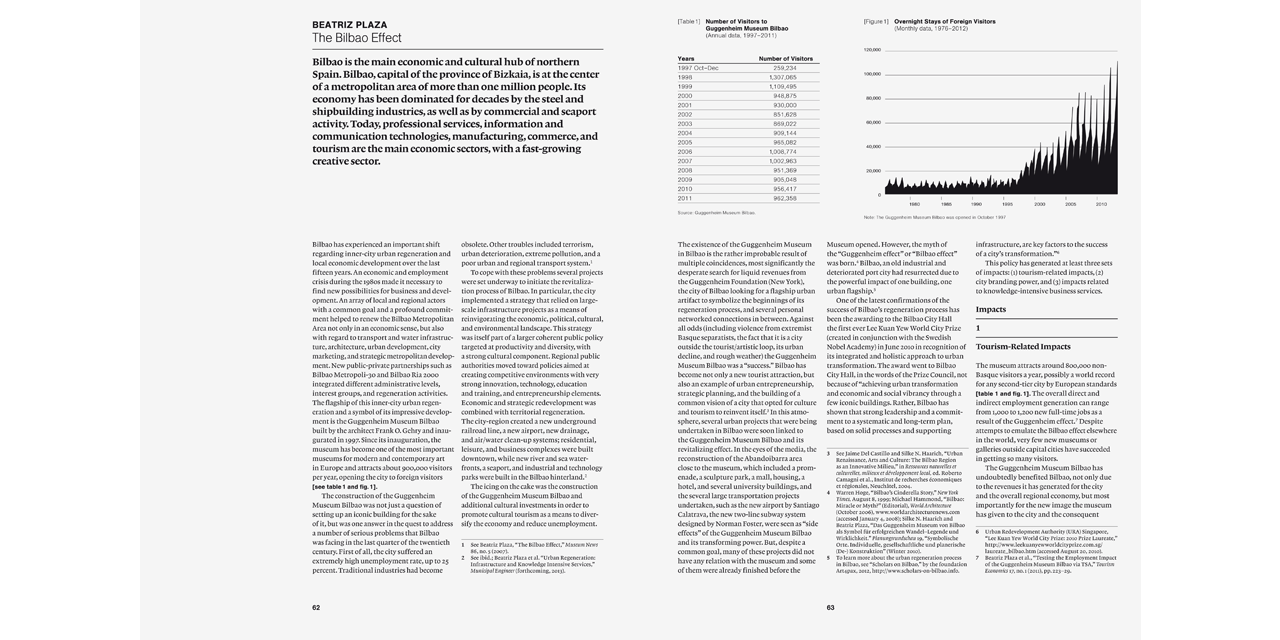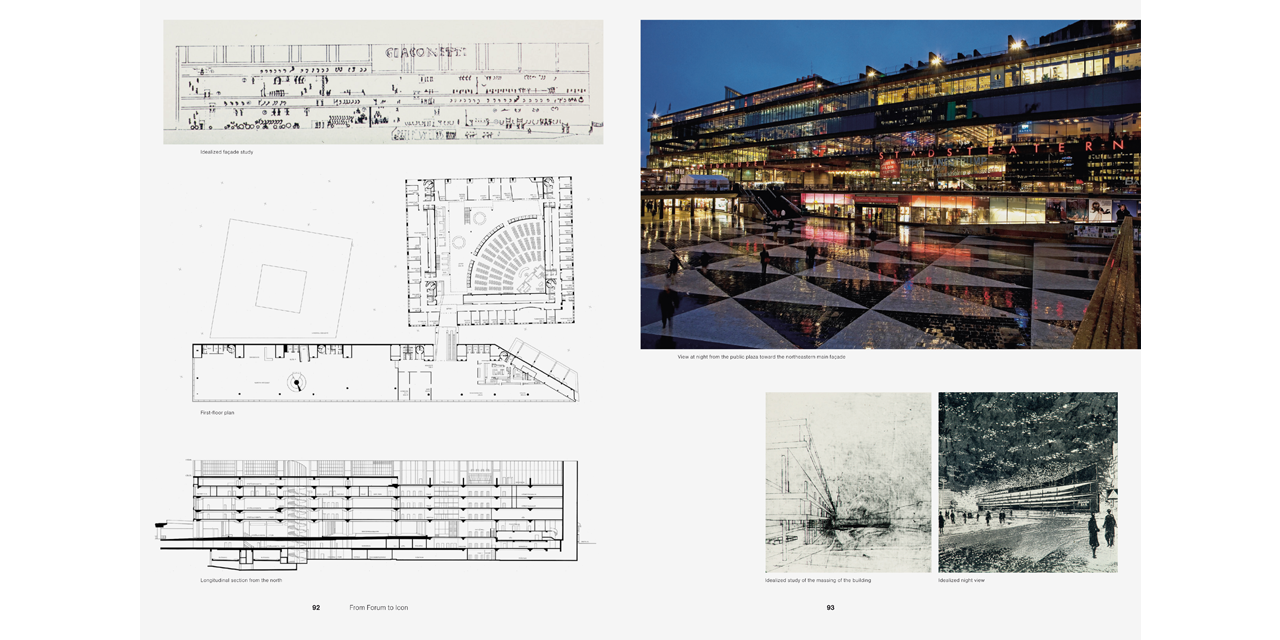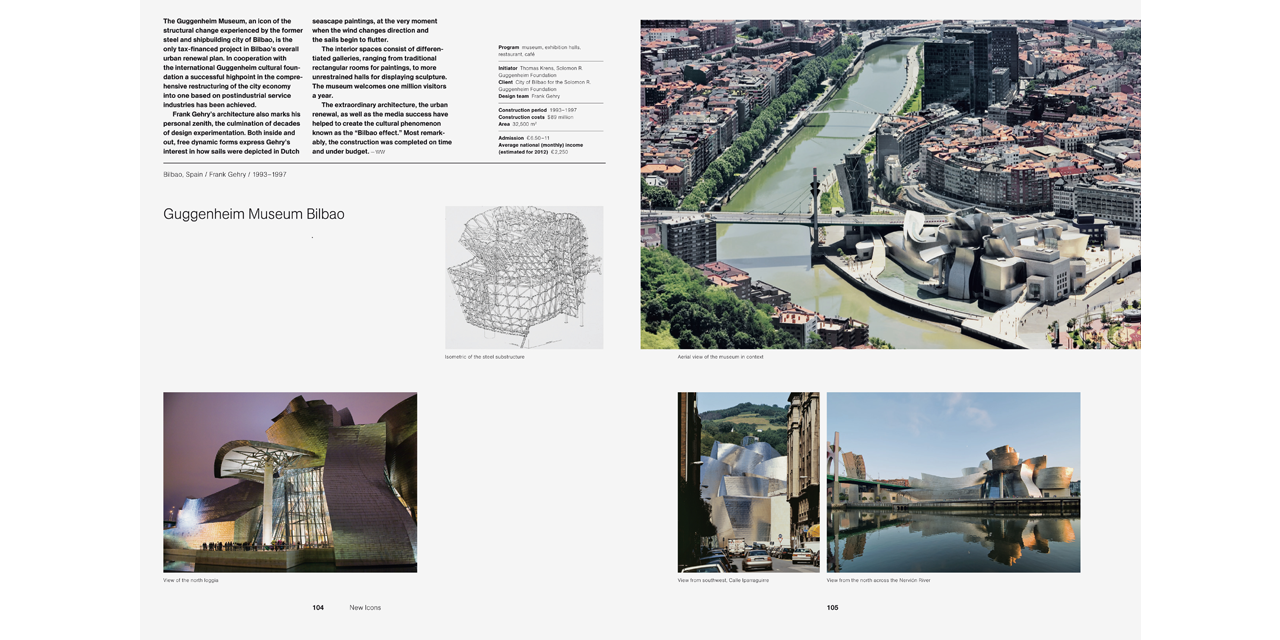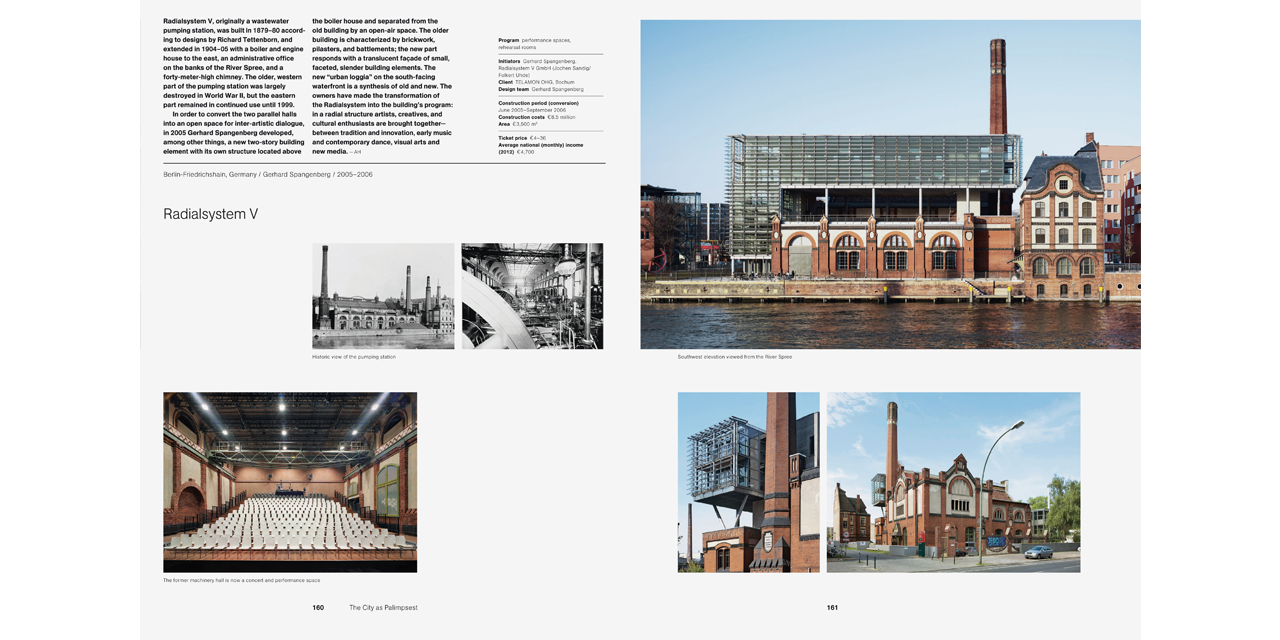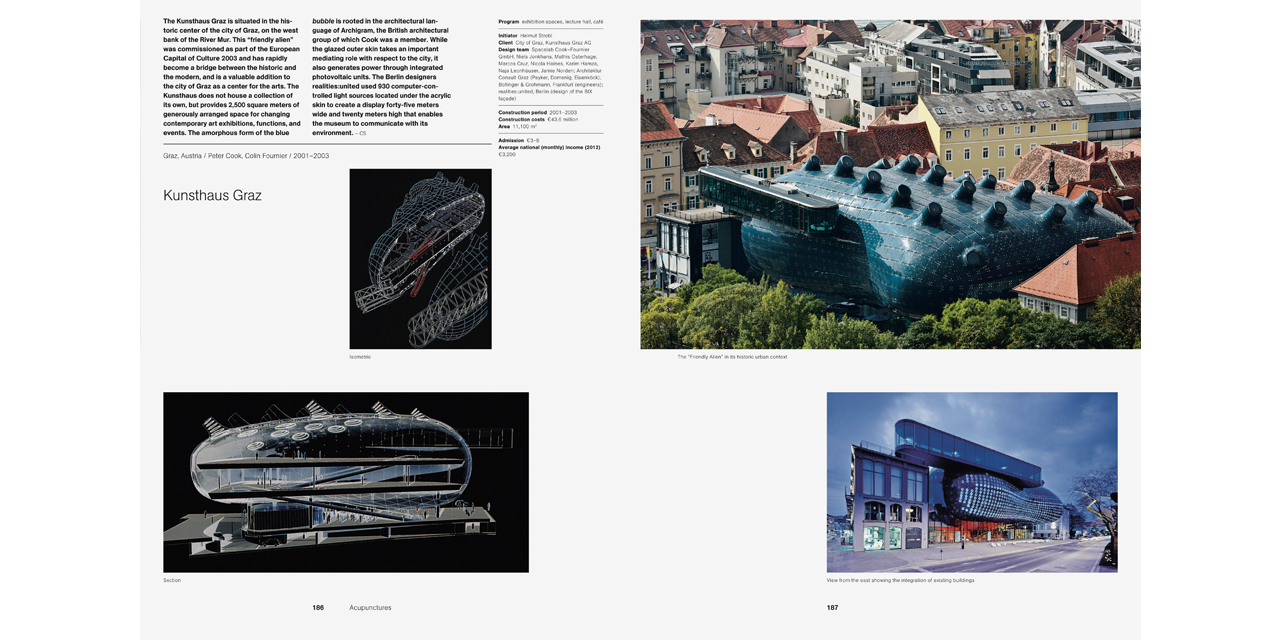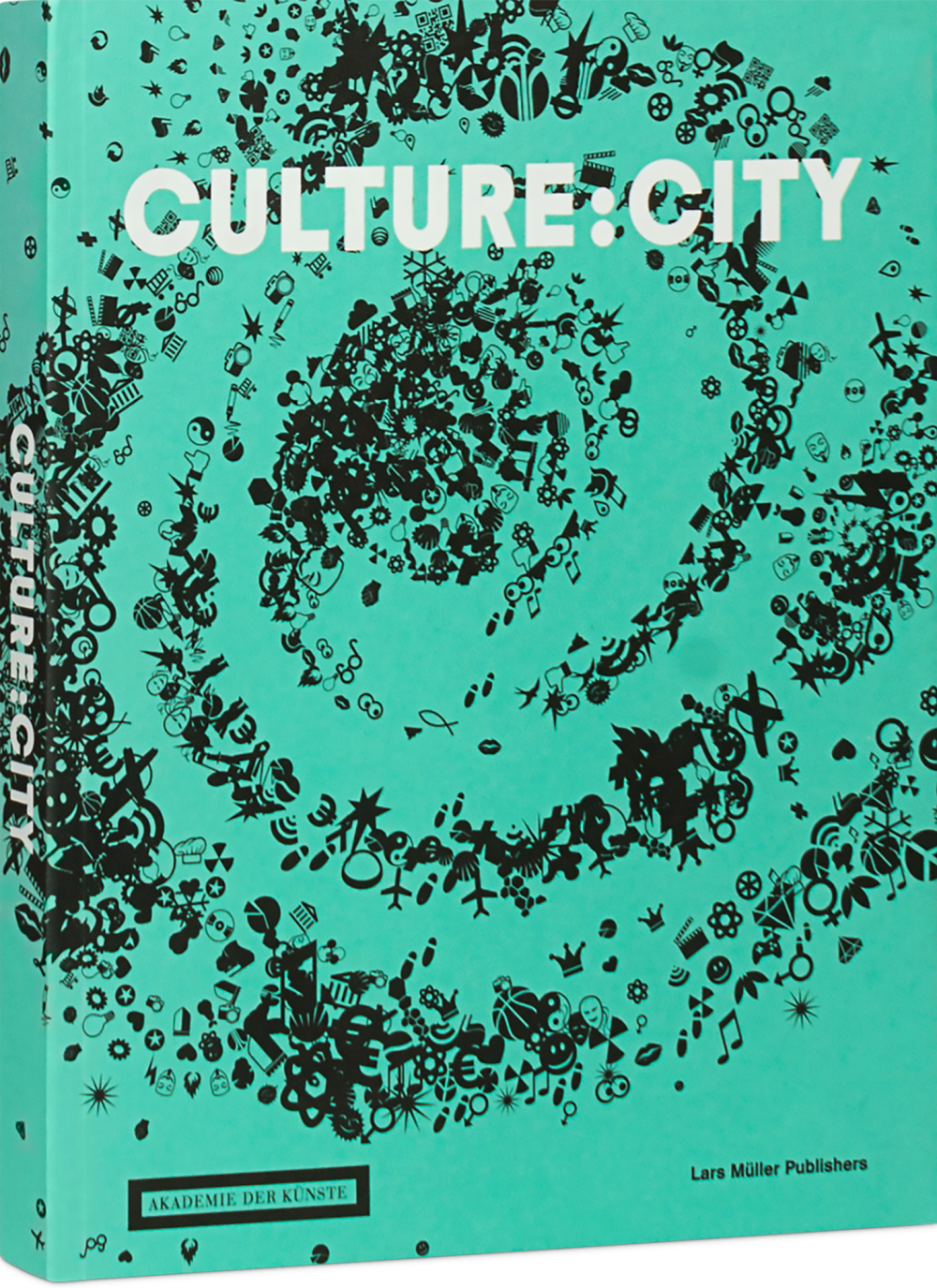
Culture:City
Since the late 1990s cultural icons have been built in numerous cities throughout the world in order to court the attention of potential visitors in a globally competitive market. The book Culture:City analyzes this phenomenon from the point of view of artists, architects, and scientists. Does culture today still function as a guiding principle, or does it merely serve as a catalyst for spectacular buildings? Are the creative and cultural sectors the industries of the future in postindustrial societies? Do these buildings liberate or constrain the cultural activities that gave rise to them in the first place? How does the “Bilbao effect”—the revaluation of a city through prestigious cultural buildings—work? Thirty pioneers, case studies, and negative examples are assembled paradigmatically in this book. Numerous essays and illustrations provide the reader with extensive and profound insight into this phenomenon.
With an introduction by Wilfried Wang, a text about the exhibition by Matthias Sauerbruch, and contributions by Ricky Burdett, William J.R. Curtis, Jochen Gerz, Nele Hertling, Kasper König, Michael Mönninger, Beatriz Plaza, Andy Pratt, Jan Schütte, Ingo Schulze, Richard Sennett, Alain Thierstein, and Manos Tsangaris, among others.
Since the late 1990s cultural icons have been built in numerous cities throughout the world in order to court the attention of potential visitors in a globally competitive market. The book Culture:City analyzes this phenomenon from the point of view of artists, architects, and scientists. Does culture today still function as a guiding principle, or does it merely serve as a catalyst for spectacular buildings? Are the creative and cultural sectors the industries of the future in postindustrial societies? Do these buildings liberate or constrain the cultural activities that gave rise to them in the first place? How does the “Bilbao effect”—the revaluation of a city through prestigious cultural buildings—work? Thirty pioneers, case studies, and negative examples are assembled paradigmatically in this book. Numerous essays and illustrations provide the reader with extensive and profound insight into this phenomenon.
With an introduction by Wilfried Wang, a text about the exhibition by Matthias Sauerbruch, and contributions by Ricky Burdett, William J.R. Curtis, Jochen Gerz, Nele Hertling, Kasper König, Michael Mönninger, Beatriz Plaza, Andy Pratt, Jan Schütte, Ingo Schulze, Richard Sennett, Alain Thierstein, and Manos Tsangaris, among others.

